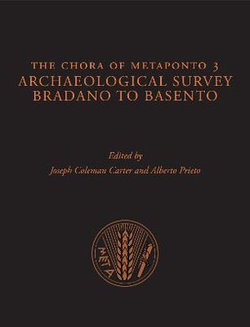The larger archaeological survey is complemented by specialist studies on the environment and landscape (geology and geomorphology), the classes of artifacts (stone tools, ceramics, and metal objects) of greatest cultural and chronological significance, and the methods and procedures employed before, during, and after the fieldwork. This volume is also one of the first studies of its kind to employ Geographic Information Systems software (GIS), remotely-sensed data (aerial photography, satellite imagery, digital terrain models), mathematical modeling, and three-dimensional rendering as the platform for spatial analysis and interpretation, alongside traditional statistical analyses using databases. The text is richly illustrated with hundreds of line drawings, photographs, and maps, and a separate large-format atlas will contain detailed maps of the entire study area.



Share This Book: